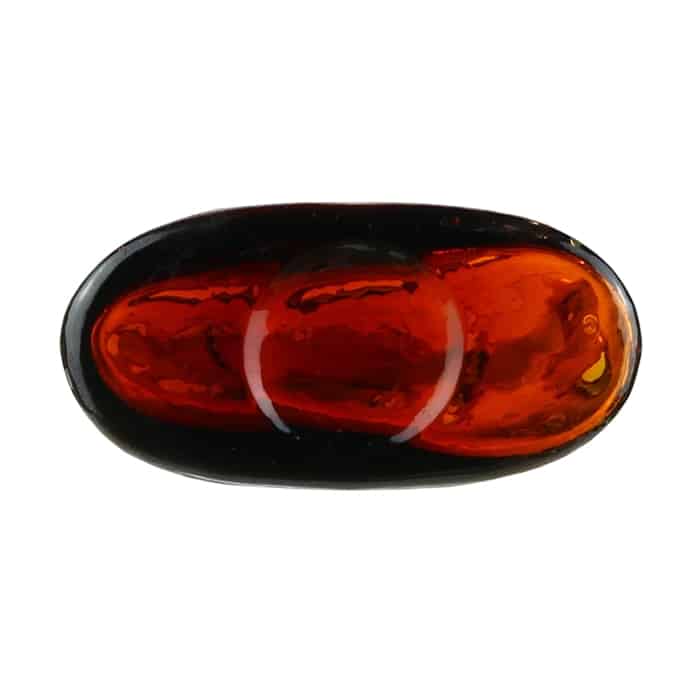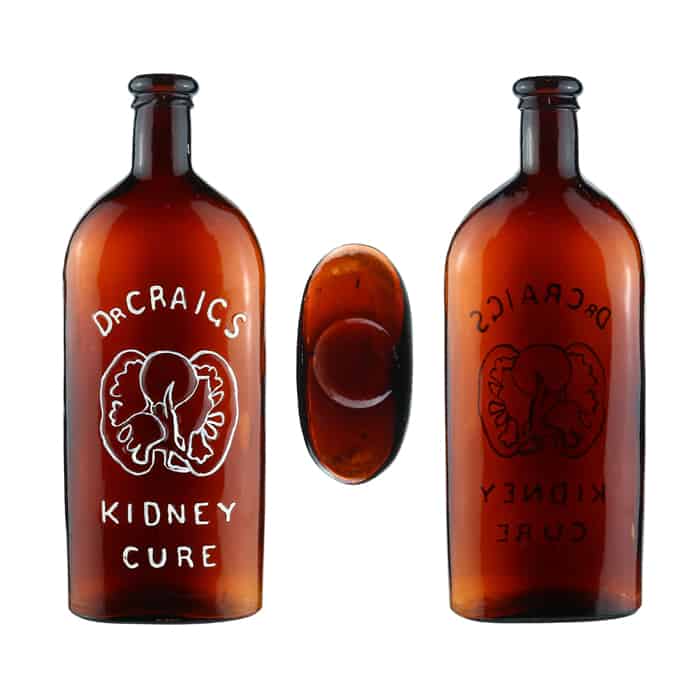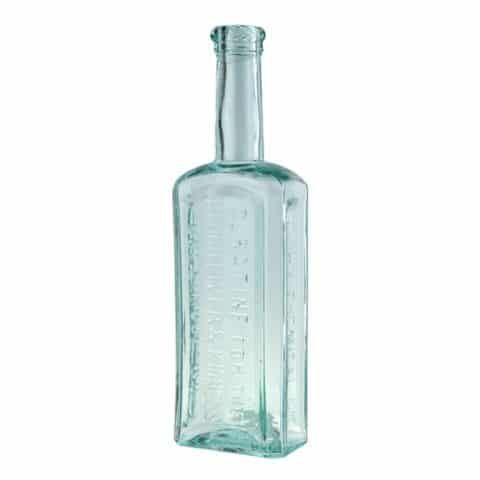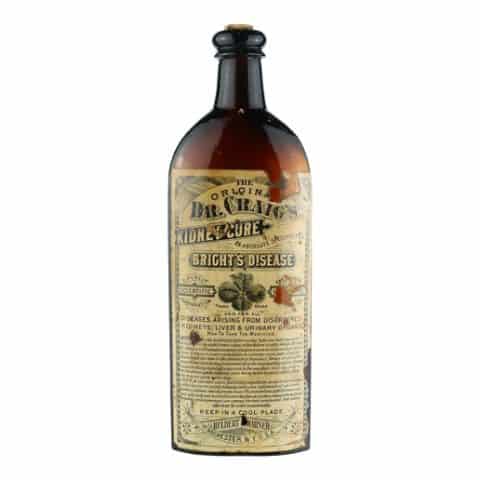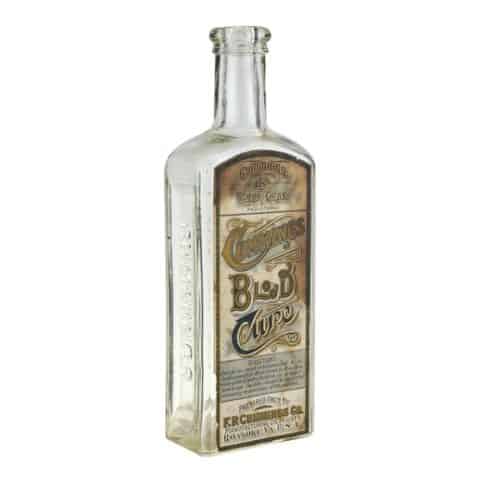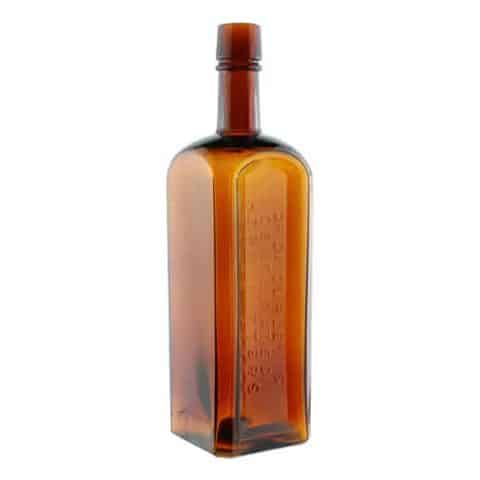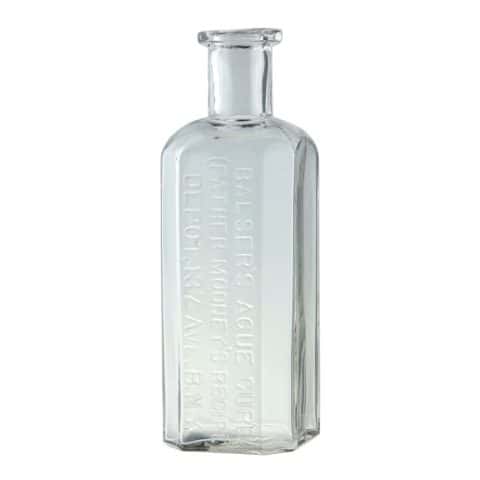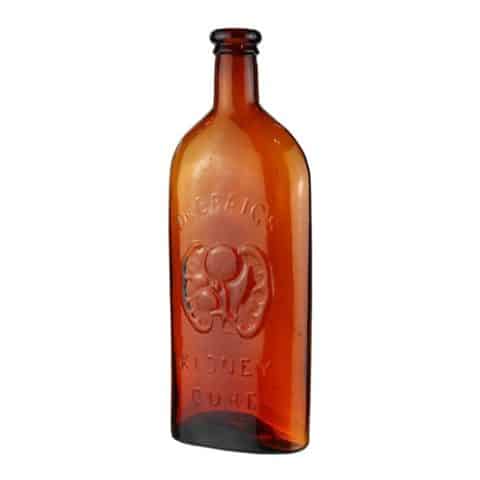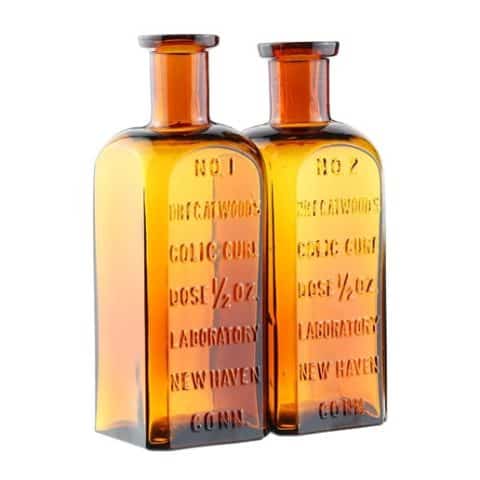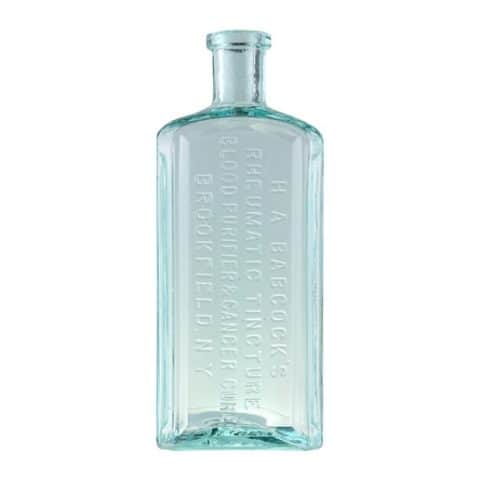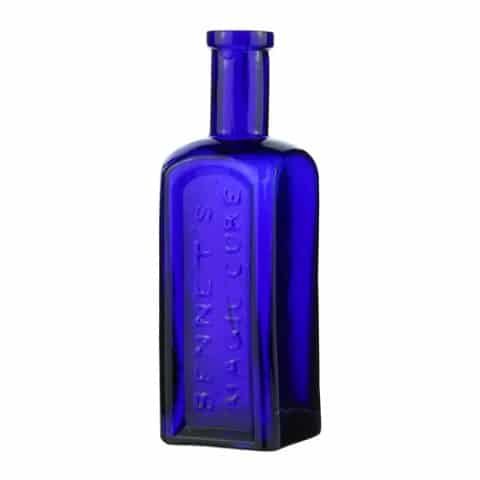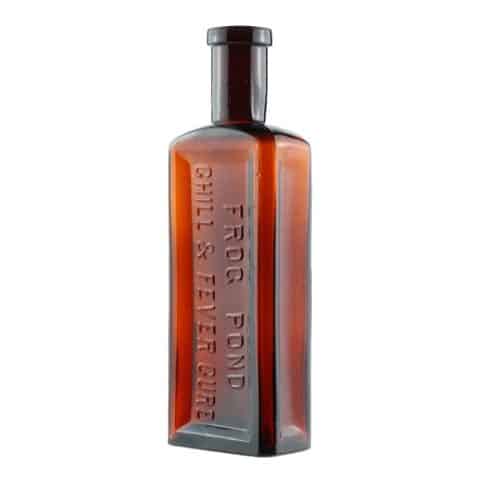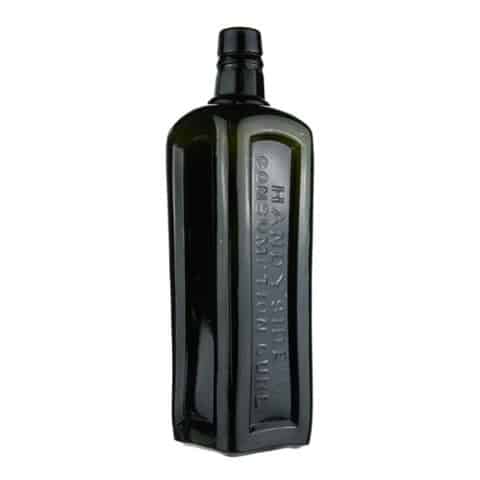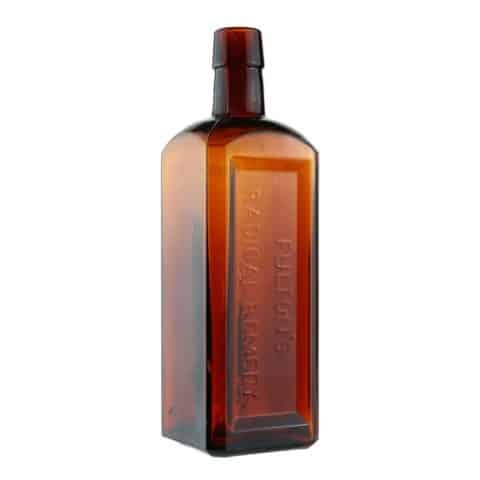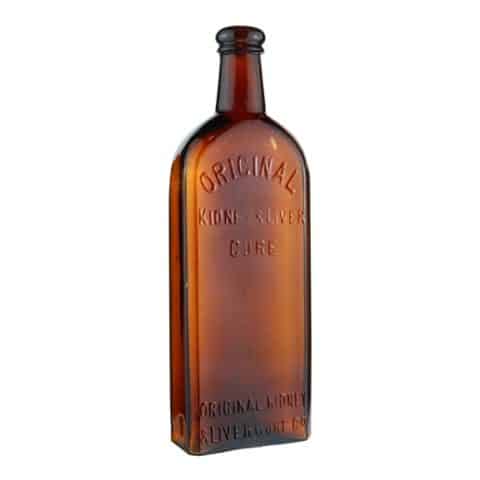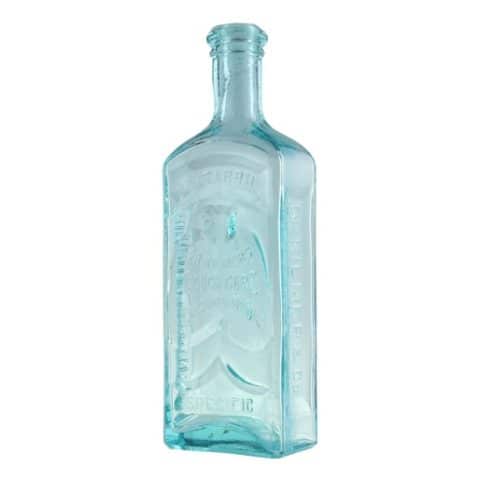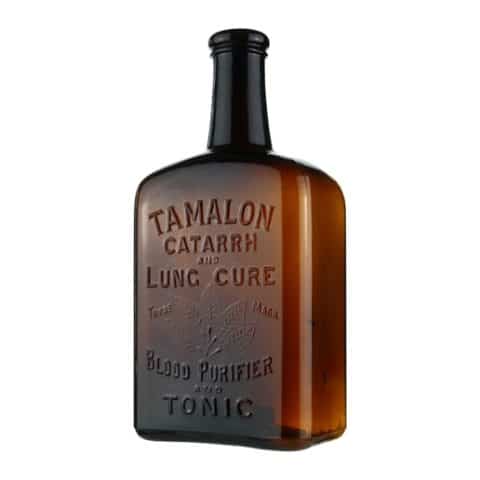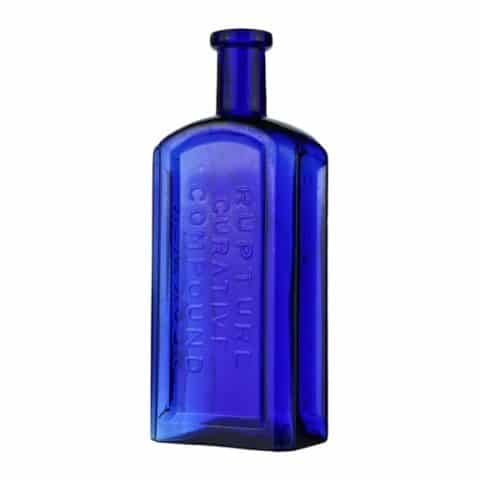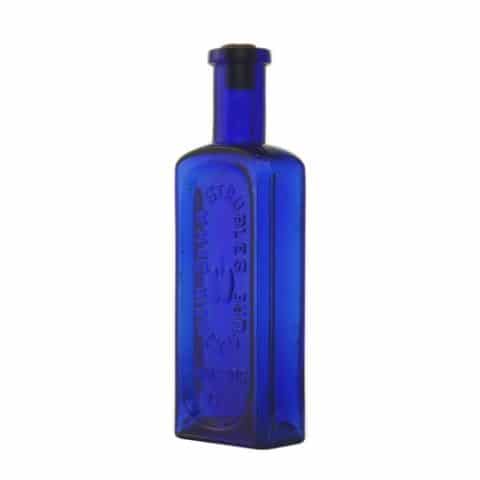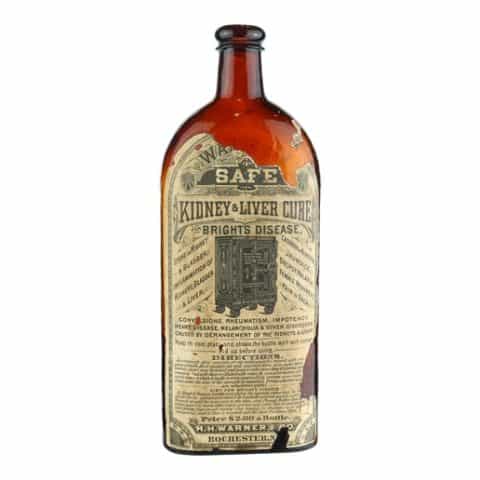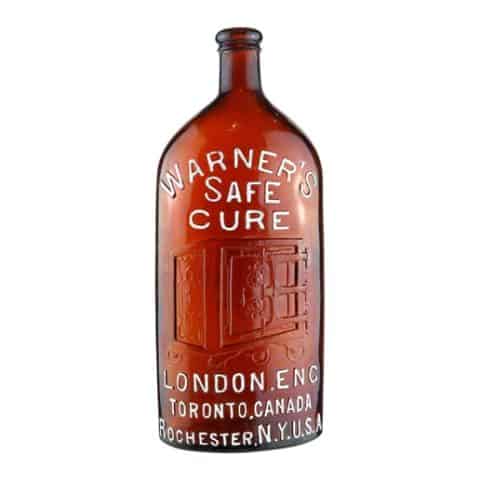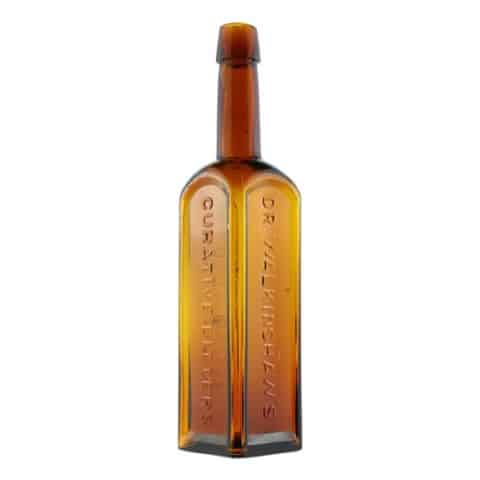Dr Craigs Kidney Cure (Embossed Kidneys)
Dr Craigs Kidney Cure
(Embossed Kidneys, Atlas and Globe)
Dr. Charles Craig, Rochester, New York
Medium Amber Oval Medicine Bottle
Provenance: Bob Jochums Collection
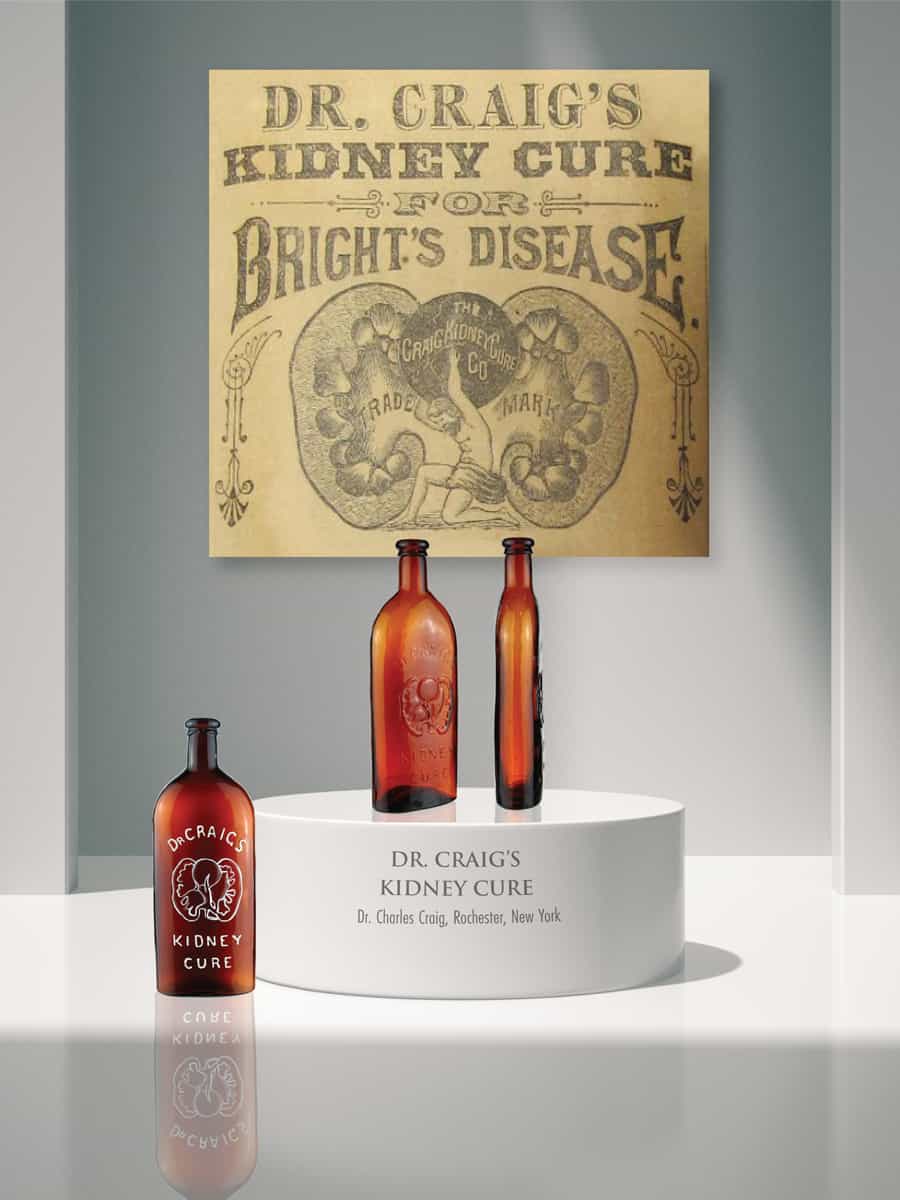
In the early 1880s, any state medical licensing laws were still unenforced. If you chose to call yourself a doctor and offer treatment to others, you just needed to promote your services to others in your community. Medicine was a family business as a physician routinely treated not just an individual but “households: husband and wife, children and servants, and—in rural areas—farm animals as well.” It appears that Charles Craig became Dr. Charles Craig when he developed a medicine in the 1870s and marketed its success after treating himself and curing his case of Bright’s disease. Two of Dr. Craig’s sons also became doctors by 1882 simply by working with their father and becoming owners and partners in their father’s business.
Bright’s disease is a historical classification of kidney disease that would be described in modern medicine as acute or chronic nephritis (glomerulonephritis). It is characterized by dropsy (edema, swelling) and the typical presence of albumin in the urine, frequently accompanied by high blood pressure and subsequent heart failure. Hemorrhages, apoplexy (stroke), convulsions, blindness, coma, and death could follow.
The 1870 Federal decennial census listed Charles Craig’s occupation as a hotel keeper. The New York state census of 1875 showed that Craig lived with his wife and eight children (ages 6 – 22) and because he was still working in the hotel industry, five servants along with a clerk, two carpenters, two civil engineers, and a mason.
By 1880 at the age of 55, Craig’s occupation was given as “medicine manufacture,” and his son William’s (age 21) occupation was the same as his father’s.
It is uncertain when Charles Craig invented and began promoting his kidney cure, but the above census data and additional newspaper articles suggest that it was around 1874.
The next ten years were tumultuous and burdened with legal action. The formula and rights to manufacture the product were sold on numerous occasions and sales were even attempted when Dr. Craig didn’t have the rights to sell.
The primary sale was in 1879 to Hulbert H. Warner, a favorite son of Rochester, whose health had been restored by Dr. Craig’s remedy several years earlier.
News of the Warner purchase was lauded in Rochester: “Mr. Warner is just the man to take hold of this remedy and give it the world-wide fame which it apparently deserves.” The product was quickly turned into Warner’s Safe Kidney & Liver Cure while initially giving Dr. Craig credit on the label and advertising as the founder of the nostrum because of its local renown. Rochester was the third largest city in New York state at the time and the twenty-second largest city in the United States.
Dr. Craig and his son Dr. William H. Craig were employed, post-sale, by Warner for two and a half years, but the Craigs became dissatisfied with their income when Warner’s production of the medicine was exceptionally successful, yet Warner chose to re-invest the profits in advertising and production rather than paying his partners a percentage of the revenues. Craig, his son, and Dr. John B. Henion (creator of Henion’s Sure Cure For Malaria) attempted to retake the rights to the kidney cure, claiming that Warner had adulterated it, but they failed in their legal battles—and they left Warner’s employ.
Dr. Craig attempted to reenter the patent medicine business with a cure curiously similar to the one he had sold to Warner. Additionally, he attempted to add “& Liver” to the name of his original product but, in doing so, ran afoul of Warner’s trademarked name. Between 1879 and 1883, Craig sold other medicines that he’d developed but did so through other investors, producers, and business names…and he never recouped the prominence that he’d achieved through his original product or as marketed and sold by Warner. A permanent injunction against Craig manufacturing his kidney cure was issued in March of 1883, with the newspaper reporting that “the decision, it may be added, seems to have been anticipated from the beginning by all fair-minded men, who could not easily see how a man could ‘sell his cake and eat it, too.'”
Dr. Craig’s final cure, which our museum example represents, was produced for a very short period (perhaps 1884 into 1885). It is known that the product was produced under the business name Dr. Craig Specific Medicine Company, which was formed in New Hampshire in February 1884 with the interests of all parties (Charles Craig’s other son, Dr. Thomas Craig, was no longer involved) operating out of Boston, Massachusetts. Subsequently, the business was reorganized under the laws of the state of Maine, allowing the laboratory in Rochester to continue manufacturing the medicine.
Our scarce museum bottle is a handsome medium amber flask-like bottle measuring 9 ¾ inches tall, 3 ½ inches wide, and only 1 ¾ inch thick. The oval pint bottle has a double-ring applied collar, and the base is indented but unembossed.
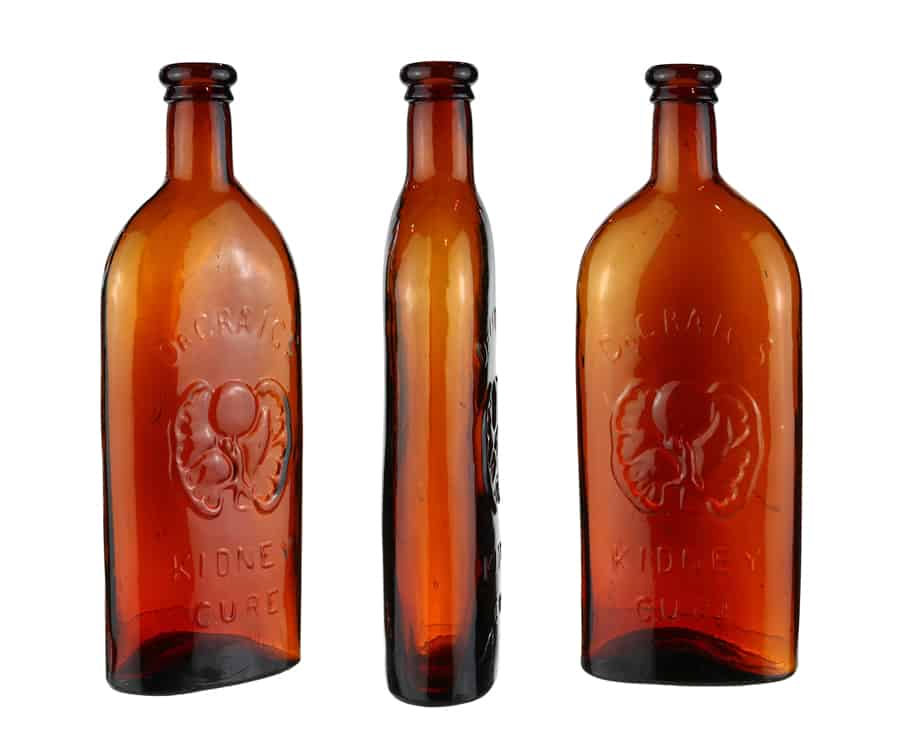
The bottle is embossed on one side, while on the other side is where a large label would have been applied. The embossing reads horizontally: ‘DR CRAIGS (kidneys, Atlas, and globe) KIDNEY CURE.’ This bottle, commonly spoken of as “the Dr. Craig’s with embossed kidneys,” is the only Dr. Craig’s bottle with an embossed trademark. The embossing is consistent with the trademarked label image from the foundational product, Dr. Craig’s Kidney Cure For Bright’s Disease.
See a second example of Dr. Craig’s Kidney Cure in the museum Cures Gallery.
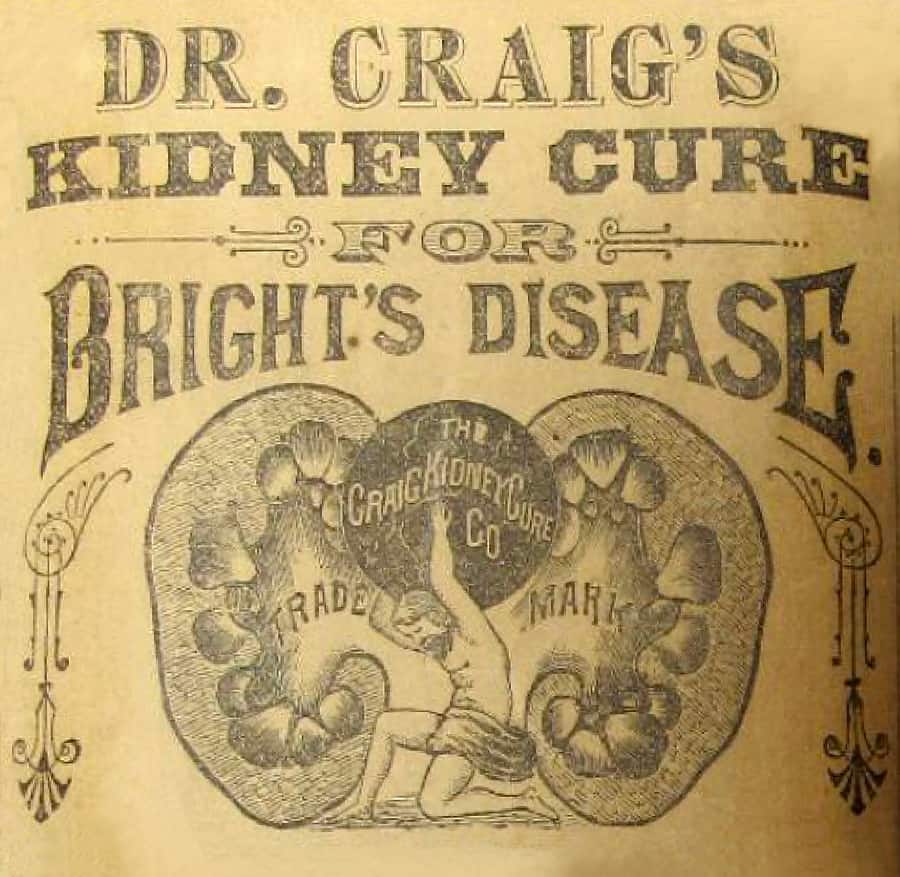
Dr. Craig continued to offer medical consultation and correspondence during the late 1880s into the 1890s from his home in Rochester. Products invoking his name during this period included Dr. Craig’s New Discovery for Bright’s Disease, Dr. Craig’s Nervine, and Dr. Craig’s Vitalized Ozone, among others. Craig died in 1901 at the age of 79.
Primary Image: Dr. Craig’s Kidney Cure bottle imaged on location by Alan DeMaison, FOHBC Virtual Museum Midwest Studio. Bob Jochums collection.
Secondary Image: Dr. Craig’s Kidney Cure bottle imaged at the Reno 2022 National Antique Bottle Convention by Alan DeMaison, FOHBC Virtual Museum Midwest Studio. Michael & Kathie Craig collection.
Research: Bob Jochums, Berkeley Lake, Georgia
Support: Reference to Warner History Update by Michael Seeliger, FOHBC, Bottles and Extras, Vol. 31 No. 5, September – October 2020, pages 52 to 61.
Support: Reference to Bottled Products and the U.S. Patent Office, Volume III (Product Listings), page 149. Research by Eric McGuire.
Support: Reference to What It Was Like To Be Sick In 1884 by Charles E. Rosenberg, American Heritage; Volume 35, Issue 6; October/November 1984.
Support: Reference to A Treatise on Bright’s Disease of the Kidneys; 1884, Henry B. Millard, M.D., 246 pages.
Support: Reference to Wikipedia, Bright’s disease.
Support: Reference to Collecting All Cures, Bill Agee, 1973, pages 16 and 17. Read the book in the FOHBC Virtual Museum Research Library.
Join the FOHBC: The Virtual Museum is a project of the Federation of Historical Bottle Collectors (FOHBC). To become a member.

